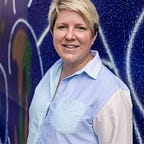Lean Agile Brighton 2018
Last month I attended the inaugural Lean Agile Brighton conference born out of Brighton Lean Agile MeetUp Group.
The day started with me striking up a conversation with the keynote speaker, Caitlin Walker, a youth worker turned conflict coach. When she asked me what I was looking from the day. I said I like to be inspired but I’d also like to leave having learnt something new that I can apply in my role.
By the end of the day, I’d been introduced to new concepts, frameworks and even a new language so I can definitely it was a day well spent. So what did I learn?
Mental Models, Invisible Architecture and Agile -Caitlin Walker
I learnt about the concept of clean language. Clean Language is a technique that is used especially in psychotherapy and coaching, and more recently as a research interview technique. Clean questions invite people to consider their experience from different perspectives and can aid participants in the generation of new and powerful ideas.
Here are some examples of clean questions you can use to understand how someone else sees the world without using your own words/experiences to frame theirs. This coaching approach forces you to keep your own assumptions at bay.
Example:
Q: When you’re working at your best, you’re like what?
A: The respondent is encouraged to use a metaphor e.g. “When I’m working at my best I’m like a soaring eagle”
The coach then is invited to ask more questions to explore what it means for that individual by using a set of key phrases and building on the language and words provided by the person they’re speaking to e.g. a follow-up question to the above might be:
What kind of eagle is that?
Where is the eagle soaring?
The conversation enables you to build up a picture without imposing anything on the other person.
A useful clean question in the context of a project might instead be: “If this project was perfect to you, what would it look like?”
A clean language activity for you to try:
Try a 15 min clean language coaching game.
Straightening the circus mirror — Geoff Watt
Geoff introduced the group to the set of ORGANIC agility principles. These five principles can help you assess the maturity of your organisation in terms of agile adoption.
ORGANIC Agility™ expresses in a single word the fact that being agile, or becoming more agile, requires a more holistic view of an organisation, which goes beyond teams, practices, or frameworks.
Organisations are thought to move through these five key stages before reaching an ORGANIC state. These are:
- Hierarchical
- Enlightened
- Shared
- Self-managing
- Organic
At each stage, groups are moving further away from top-down hierarchical structures to teams built around end-to-end accountability where all members are autonomous and empowered to act. Teams like these can respond quickly to external factors and often develop and display stronger characteristics of strength and resilience.
Value streams are made of people — Liz Keogh
Following on nicely from Geoff’s introduction to ORGANIC agility, Liz was also talking about the paradigm shift away from technology/machinery to value and interaction.
She rightly says that increasingly our language is about the flow of work rather than about the people it flows through and to encourage team’s to make people the focus of our language e.g. what if moving something to “Ready for QA” was actually “Ask the testers if there’s anything you can help with”.
Sallyann Freudenberg — Leaping back into the code via remote mobbing
When I first saw the talk title, I thought to myself “maybe I should skip this one” — not being technical myself I wondered what I could learn. How wrong I could be! Sallyann’s talk was inspiring, honest, funny and very relatable: it turned out to actually be my favourite from the whole day.
As well as talking about her journey back to a job coding, Sallyann also talked about building inclusive working environments in which everyone can thrive.
Within a workplace, you’re going to have…
People who work better verbally, ‘sounding out’ their ideas to help them feel more complete. People who worked better spatially, drawing diagrams of how things fitted together or where boundaries were. People who worked better straight into the code, textually. People that needed time alone. People who thrived on working almost exclusively with others.
Statistically, you have neurodiversity in your organisation whether you are aware of it or not.
We all need to do much better at acknowledging and celebrating the diversity of learning styles presented in our workplaces.
Thanks to Agile Lean Brighton for a brilliant day of learning and to all the fantastic speakers!
